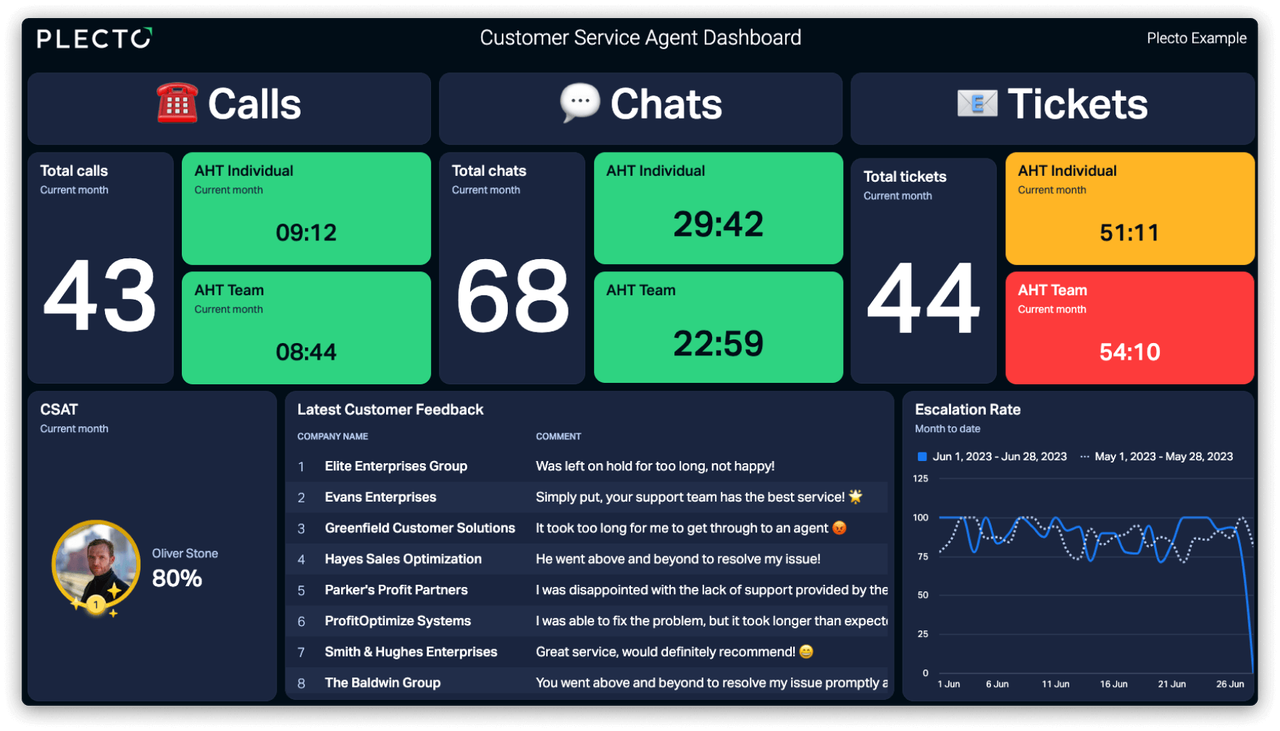In today’s ultra-competitive business environment, prioritizing the satisfaction of your customers is a must. And for this reason, having a customer service team that is proactive can make all the difference. In this article, we show you how to implement a strategy of proactive customer service so that you can take your customer service operations to the next level.
What is proactive customer service?
Proactive customer service focuses on anticipating customer issues and proactively addressing them before the customer gets in touch. This approach enables you to stay ahead of the game when it comes to customer problems, in turn boosting your customer satisfaction. Some examples of proactive customer service include:
- Immediately notifying customers of errors or problems, such as shipping delays and service interruptions.
- Introducing customers to new products or offerings that they might like.
- Actively reaching out to customers to find ways to make their customer experience even better.
Proactive vs reactive customer service
On the other side of the spectrum is reactive customer service. As the name suggests, this is when you wait for the customer to get in touch and explain their problem. Relying solely on reactive customer service is suboptimal, as it increases the risk of customers becoming frustrated with your service. In contrast, proactive customer service, allows you to predict and mitigate problems as soon as possible. This way, you are saving both your and your customers' time.
Getting the perfect balance
In an ideal world, all customer service managers would like to prioritize proactive customer service. However, given resource constraints it’s more realistic to get an ideal balance between the two. So, in reality, the most practical solution is to combine both of these strategies. To do this, figure out the areas where proactive customer service can benefit most.
3 advantages of proactive customer service
Still in doubt? Here are some pros of implementing proactive customer service into your customer service strategy:
1. Strengthened customer loyalty
You have a better chance of keeping customers when you actively engage with them. For example, Microsoft’s Global State of Customer Service report found that 67% like proactive customer service notifications. If you demonstrate that you often think of your customers, this will be returned to you through increased trust and loyalty.
2. Less pressure on support agents
By implementing proactive customer support methods, you are lowering the number of support tickets. Why? The reason for this is that you are addressing customer issues before they become too big and complex. Furthermore, if a certain problem leads to a surge in support tickets, your agents will already be better equipped to deal with the issue.
Build your first dashboard.
Start your 14-day free trial today
3. Increased customer satisfaction
In their book The Best Service Is No Service, Bill Price and David Jaffee talk about how the greatest method to satisfy clients is to eliminate the need for service. For this to be done your team needs to proactively address the customer's problems so that the customer doesn't need to approach the customer support team. This is beneficial for both you and your customers. However doing this is easier said than done, which is why we’ve put together five solutions that you can implement in your support team.

4 proactive solutions for customer service
Switching to a proactive way of doing customer service may seem challenging, so here are some solutions that will make your transition easier and more successful.
1. Be honest with your customers
Even when people don’t get the answer they are hoping for, everyone appreciates being told the truth. Therefore, inform your customers of any problems as soon as possible. For example, if an order is delayed, send out an email with the updated details instead of waiting for them to get in touch. An increasingly popular way to do this is by setting up an issue management portal where customers can check if there are any service issues.
2. Send out customer surveys to gather feedback
Regularly sending out customer surveys will give you invaluable insight into their behavior and needs. On its blog, Aircall recommends leveraging Customer Effort Surveys (CES), Customer Satisfaction (CSAT) surveys, and Net Promoter Score (NPS) surveys to get the most comprehensive insights. With surveys, use a combination of closed and open-ended questions to gather individual feedback but also so you can compare responses. Getting this feedback will not only help you improve your customer experience but also help make your product even better.
3. Build a knowledge base
By creating a help center built up of FAQs, articles, and tutorials you are providing customers with the opportunity to resolve many of their queries without having to get in touch with the support team. Having this knowledge base will not only reduce the workload of your support team but also empower your customers to conveniently fix issues themselves.
4. It all starts with the team
To ensure proactive customer service, you need to have knowledgeable and enthusiastic customer service representatives. And to have that team you must have proper coaching sessions and onboarding programs. Holding regular coaching sessions gives your team the opportunity to develop their skillset and excel in their daily tasks.
How can Plecto help you build proactive customer service?
To provide proactive customer service, you need the right tools. With Plecto, you can directly integrate with your favorite customer service systems so that your support data can be tracked, and acted on, in real-time.




